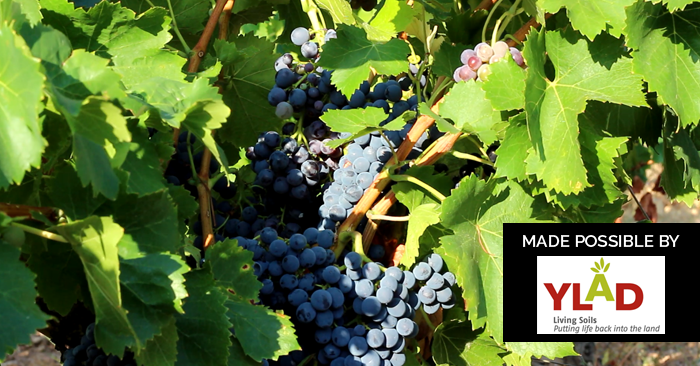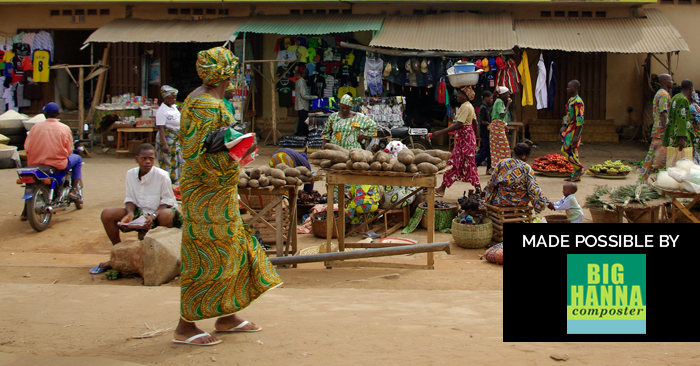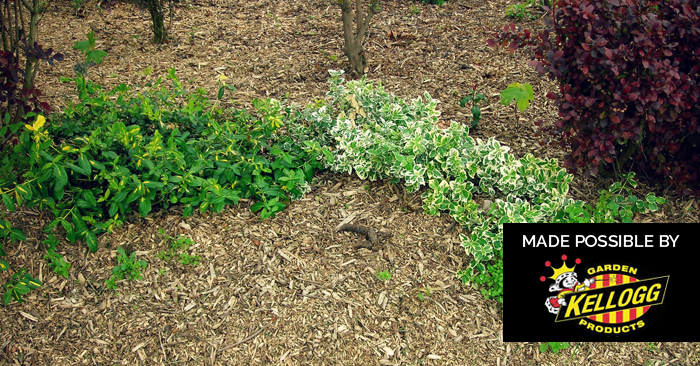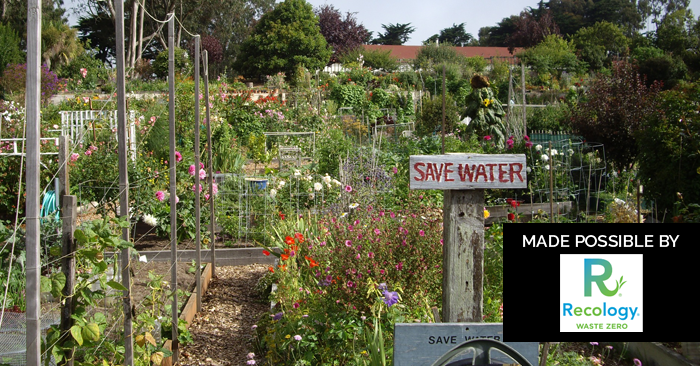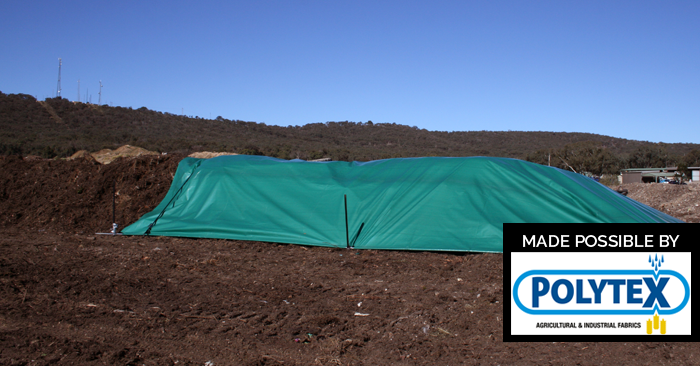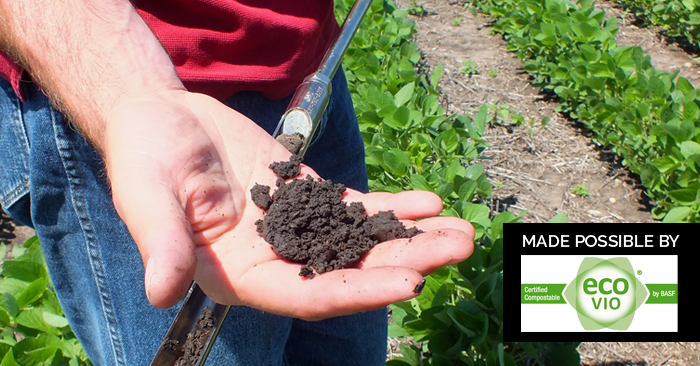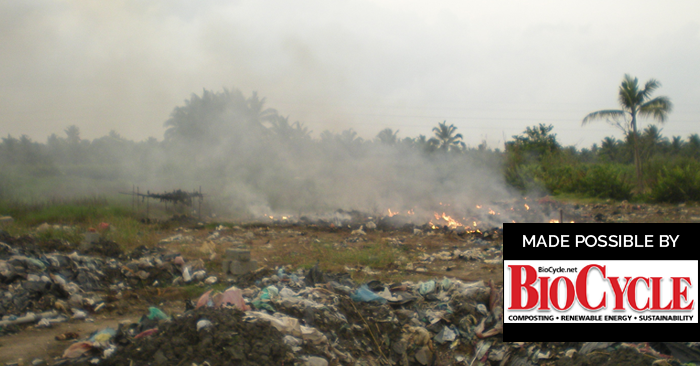Soil Crisis #1: A Need for Economic & Political Change
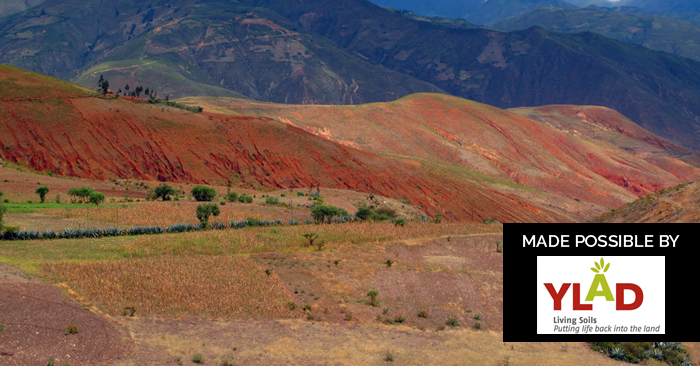
This episode corresponds to Lesson 1 of our online course.
Episode eighteen: in this part one of a two part special, we speak with zero waste pioneer and industrial economist Robin Murray about the importance of soil as a basis for human economy, and the great chasm between what science tells us about soil’s role and the existing inadequate policies for soil management that has lead to a soil crisis. We will discuss the ways in which our current economic and political models of mass production have severed the link between communities and the soil, how politicians and policy makers are reacting, and how a new circular system might integrate soil management better.
Thank you to YLAD Living Soils for making this episode possible.
YLAD Living Soils is an Australian owned company formed to supply sustainable biological, organic and humus compost fertility products and programs that support the natural balance of the physical, chemical and biological aspects of the soil, lessening the reliance on conventional chemical fertilser inputs. Find more on their website.
Photo by Maurice Chédel / CC BY
We’ve had a bad track record, at least in the west, with taking care of our soils, because even though our entire existence is completely locked into the soil, the link between soil and human economy is very rarely discussed. As an economist, could you give us some background into the history of our relationship with the soil and explain to us this link?
Robin Murray: Humankind has always had very close relations with the soil, but one of its problems is, as it develops, the tendency has been for a rupture to grow between them. So, one of the great divisions – we always talk about class divisions – well one of the huge divisions of human history is between cities and the country. If you take the great empires, one thesis is that empires have to feed themselves, and therefore they draw on their immediate environments in order to feed their central cities. But the tendency has been for them to deplete the areas around them so that gradually the quality of the soil decreases; and so they have to expand the empire in order to get to new places. So there’s a kind of diminishing returns that sets in and is one of the forces for them to go further and further afield in order to get both the food, but also the raw materials, and so on, necessary for it. And after a bit, to actually keep control of such a vast empire means larger armies and therefore they have to be fed, and it’s a cycle, which suddenly explodes. They get weakened, and a new empire starts up again. Or it just breaks open – as was the case in Europe after the end of the Roman Empire. It just broke up into smaller areas that had a different relation to the soil.
There are two exceptions to this pattern: one is China, and the second is Egypt. In the case of Egypt, why that was not affected in the same way is that their human waste was fed back and replenished the soil around them, mainly through the impacts of the floods, and the way the Nile flooded everything. And in China it was much more explicit: the human waste was gathered and has always, traditionally, been then used for fertilisation. And of course, in the early modern era here the same was true: in Britain, Cheshire and Hertfordshire became very fertile areas. And this was because of night soil, which was taken from the cities to the countryside.
And you could say that the WC was one of the big forces to rupture that connection between the human waste and soil fertility. So you’ve got the rupture growing so that now, as we all know, many people in the towns don’t know what a chicken looks like, or where milk comes from. And this is a terrible, terrible rupture. And at the moment, it’s not just the WC that stands between the humans of the town and the countryside; it is also supermarkets and these long chains of food distribution, which are also cutting it down. And so the question is, how to reconnect the two? Because they are connected – they are connected. We may not be aware of it, but we are part of the cycle. And if we deplete the soil because we take the nutrients from it without returning them to that place, we then either lose them, destroy them, put them in the wrong place, whatever… If we destroy the cycle between them – the cycle within which humans live – then, just like the Roman Empire, we will collapse from within.
In the past, we have tended to see the link as very much one where the earth is a source to be used – to be extracted from. Some people call this “natural capital”, and that we’ve been running down our natural capital because we haven’t been thinking how to maintain it. And in that sense, I think it’s been a bit-piece in the human economic drama. Whereas I think what is now being recognised is that they are very much more interconnected. The human economy – the contemporary economy – is going through enormous changes, and it’s moving from the twentieth century period of mass production to a much more complex, information-centred form of production and distribution.
Some people have called this, and I myself have called this, Post-Fordism. Fordism was the mass production, but we’ve now gone way beyond Ford. I don’t think I would call it “Google-ism” either, but it’s a quite different model. And this has great significance for our relationship with materials and with the soil; so that instead of looking at things relatively simply as linear flows, we are looking at them with much greater complexity. And as we see things more complexly, we see that, actually, the soil and earth fits into more complex systems, and cannot just be treated as an input, which is then producing an output.
I do think, as you say, that there is a change going on and people are beginning to realise the importance of managing the soil in a sustainable way.
RM: Yes, and as you may know I worked a lot in fair trade here, and one of the things I’ve learned – which has been a really profound experience – is that we have a nut company, which is called Liberation Nuts, and it’s owned by the nut farmers. And the ones who do cashews are from Kerala in India, and they’ve almost become our educators, because they come from a Gandhian tradition, and the Gandhian tradition is very much about connecting the human beings and the soil. They send us reading, and one of them is by, sometimes people call him Ghandi’s economist, which is a man called Kumarappa. And he said we have to deeply respect the soil and what it produces, and how we think about these two things. That whole Gandhian principle of changing yourself and then changing what is around you, and making sure that your technology is under your control and not controlling you – that was a voice that was drowned out by the period of mass production, in my view.
Now I think we’ve actually come to the other way, which I think is the Gandhian approaches, which our Indian colleagues follow. A striking example of that is with the Amish in North America. If you go to an Amish farm, there are no tractors and everything is done organically, and what is so striking is that this pre-modern form that the Amish have: regularly the productivity of their soil came out the highest in North America.
So these practices, but when married with modern information and communication technology – that’s the point, it’s not just to keep it like that – this is a very powerful recipe for thinking in a different way about how to produce the food for ten billion people. And I think you might say that the next revolution – the next agricultural, green revolution – is not going to be about seeds and plants and GM crops and so on, it is to be about the soil. And if we think of the soil as the object for revolution, through all these different means, then I think we’ve got a light in front of us to which we can direct our energy.
Do you feel that influencers, such as policy makers and politicians, realise the importance of soil when they approach waste management practices and agricultural policies?
RM: No. The answer to that from the British perspective and my experience here is that we’re right at the foot of Everest on this one. I’ve been involved for, what, twenty years on the issue of waste. It was very difficult to get waste pushed up the agenda, to get people to think about waste; politicians and indeed the press, and so on. Very difficult. When I started in the mid-nineties, I think our recycling rate was five percent, and it just was not on the radar. Also, to be an official in the local government in the waste department: this was slightly like being in the fire brigade; it was the kind of Siberia, in terms of the hierarchy. And so, how to get people aware of, in this case the negative aspects of waste – landfill, incineration and so on. These all had extremely negative sides, let alone the positive.
So, it took five years for us in this country to move to a point where it became a national issue, and it became a national issue very much because of the negative sides of the issues around – particularly about incineration. So always, and I think it’s been true of the environmental movement more generally, but very often (like with Rachel Carson), it is the negative effects which then get people involved. And we have to then think, “Okay, how could it be different?”
So the first way it happens is always local, because it is the local people who then realise that this is actually affecting them. And that is the basis, then, for saying there has to be some other alternative, and out of that, then, becomes an interest; but the next interest is in some form of recycling. But the way in which both the traditional offices, and to some extent the politicians, have then thought, is they thought “okay, well how do we prevent this from getting into landfill or, indeed, incinerators?” and they then have these targets for recycling – but actually (it’s a little bit like supply-push), they don’t really think “what is this going to be used for?” they just want to keep it out of their residual waste statistics; usually because there’s an increasing bit of a punishment for them in financial terms.
The idea that, actually, in relation to organic waste, that it is actually precious, and that this is a resource which you must produce with quality as if you are a supplier; that you’re actually responsible for the quality of your output…We want everything that one rescues from the waste to maintain not just it’s original quality, but all the energy and labour that’s gone into it – like rubber tires have been very well used for making basketball courts; glass has been used as a very good filtering mechanism – that’s an upcycling. And in my experience of much of the waste industry, the waste politics, and the waste management by public officials – this still (in the older generation) has yet to penetrate. The younger ones – this is who we found are the potential agents for change – they young ones, who are part of the new generation, some of them see it much more ecologically. They see themselves as, kind of like farmers of waste, as stewards of waste – and not of “waste” but they are what we might call “nutrient managers”, in relation to the organics side.
But still, you’ve got the silos of waste management, the silos of agriculture; very little do they meet, very little do they meet. And in Britain there has been more connection on the paper side, than there has been on the soil side. Soil and biowaste is still very much in the back seat here, and not even the Co2 implications of composting has been adequately taken on board – they do not become part of the discussion. So, my answer to you on that one is: there is still some way to go.
In order to affect change and influence policy makers and politicians, how do we act? Do we focus on local or national campaigns and debates?
RM: Well, I think that the way in which these big changes – because this is a big industrial change, certainly on the waste side, and possibly with agriculture there are certain similarities, certainly with the big industrial farms – when you’re changing, it always changes at the margins. This is where it happens first, because the big forces of the old system are not as strong. And so you get it coming up from the base, and I think especially in Europe and North America it has been the community movement that has, since the mid-seventies, really led the way in this. And then what happens is that the first impact tends to come at the local level. And local politics has been much more about waste politics than the national level, because it’s immediate and tends to be under municipal, provincial control. But once this happens, we then have a basis for moving it up to the national level.
It’s much easier in places, which have proportional representation, because, then groups (either green groups or specific groups around waste issues) can then get a representation politically. And this is why Germany, for example, has been one of the leaders in terms of establishing very much more satisfactory types of recycling or nutrient management – if you like, a new circular economy. I think this is because they have, not only proportional representation, but they have very strong Lambda, so that there’s considerable decentralisation. So, some of these Lambda, reflecting the work of the movements, then put these things into practice. And the results can then be seen, and they begin to join up, and then they are a force at the national level, which has to content politically with the interests of the old systems.
That’s what’s happened on the energy side, and it is amazing now that that is cross party. It started with the Greens, then the Social Democrats, and then the Christian Democrats took it on, and took the lead because they see the advantage, in this case, of the energy system for all sorts of interests who they represent, because it’s a distributed system. So local villagers and local farmers, and so on, all have an interest in that new system. The same thing is needed on the waste side: we have to re-integrate it and distribute the interest in this new system.
As you said at the beginning, these are big industrial changes we need to make in how we run things, waste management wise, or agriculturally. We’re essentially talking about a paradigm shift from our current economy to a more circular one – and do you think this new distributed economy will be able to integrate soil health and management better?
RM: Well, in principle I think it should. Amongst the features of the new economy, one is what we economists call the movement from supply-push to demand-pull; that instead of producing lots of stuff and then trying to persuade people to buy it, you’re starting actually from the people and thinking how do you supply all the different things that different people want. So, you’ve gone beyond the mass. Now, the moment that you introduce the circular, you realise that we can’t just stop at human demand because you’ve got to think of it as part of a cycle. And if we look at our demands on the production process like that: i.e. not pushing out, but thinking “right, how do we pull it round in a sustainable way?” we then get very different questions. And certainly when it comes to waste, we’re not asking not how to get rid of the waste, but how to ensure that it goes round, how do we pull it round in a way that is sustainable and enriching. That’s one difference.
The second one is that information technology has allowed us to manage very much more complex systems – that is one of its great features. And what has happened is, instead of trying to control everything from the centre, we’ve got the development of what is referred to as “distributed systems”. The German renewable energy economy is a wonderful example, how instead of having a power station, you have multiple power stations – people’s homes become a power station, the farmer’s part of a power station. There are hundreds and hundreds and hundreds of power stations, which are then aggregated through smart grids and various other mechanisms, so that they produce as much, if not more, than a single power station. This is a completely different model.
Now, traditionally, farming and agriculture has been a distributed system. I grew up on a small hill farm, and the valley was full of small hill farmers. What has happened, particularly on the more fertile areas, is that farms have become larger and larger as the twentieth century mass production model is then applied to agriculture. But I think we are moving now into the possibility of a much more distributed system of agriculture and food growing, and soil care – that is what is possible. It’s not going to happen, it is a possibility, which would in that sense be similar to the energy systems developing in Germany, as against the UK.
And a third very interesting modern feature is that the so-called consumer is becoming part of production; we’re becoming prosumers. Well, we know about this with food, we actually have to cook our own food (or at least, we did have). But in more and more areas, whether it be health and how we look after our health: many of the modern issues, like chronic disease, like in diabetes ninety-eight and a half percent of all treatment is done by the person who has got diabetes or their family. The same is true in education; the same is true in transport. So now people are having to design systems so that we’re all actively involved. By the way, the computer of course is a wonderful example; computers are the equivalent of the textile mills of the nineteenth century, but in this case we’ve all got one. So, it’s a highly distributed system, and once you get people involved, then you have to think, “Right, what can they contribute? How should they contribute? How do they play a part in this increasingly complex system?” It’s a very exciting area. So, when we come to food and to soil: how do we ensure that the grievous divide between the city and the country does not become the chasm that is threatened, but is actually re-integrated so that we all play a part in this particular process?
We’ll get into detail about the ways we can organise our ecosystems and the strategies for change in part two, but to round off this part of the discussion, can you give me some examples of how people can play a part in this system, and the opportunities you see the paradigm being changed?
RM: Well, I think part of the food movement has been about this. So, the movement for urban agriculture is gathering and is stronger in some placed than others, but, the development of gardens on roofs – is it in North Korea, which is particularly strong on this? But Nicaragua is another example of where this has happened. But it’s happening now more and more, and San Francisco is strong on this. We have strong movements, and a strong tradition, of allotments here. So I think gardening, even though it may no be producing food, actually brings people in touch with the fact that you cannot treat soil as if it’s a machine; that you have to do this delicately. So, everyone is learning about this.
I think on the food side there are city farms and a big city farm movement, and the community garden movement here is growing. So I think there are very interesting ways in which that is happening. And then there are all sorts of ways in which farms are being opened up to those in the city – both to go to stay there and work there, or at least to visit. So I think that’s one of the big areas for reconnection.
